Miami Gardens, FL Pollen and Allergy Report for Summer 2023
Pollen Allergy Trends in Miami Gardens, FL
When is pollen lowest in Miami Gardens, FL?

May
Lowest month total PPM
Avg. PPM
When is pollen highest in Miami Gardens, FL?

April
Highest month total PPM
Avg. PPM
How does pollen in Miami Gardens, FL compare to Florida?
Miami Gardens has a higher average PPM than the state of Florida.
Miami Gardens yearly avg PPM:
Florida yearly avg PPM:
How does pollen in Miami Gardens, FL compare to the USA?
Miami Gardens has a higher average PPM than the USA.
Miami Gardens yearly avg PPM:
USA yearly avg PPM:
Is pollen worse this year in Miami Gardens, FL?
Spring 2023 was better than spring 2022.
Spring 2023 PPM:
Spring 2022 PPM:
Average PPM in Miami Gardens, FL

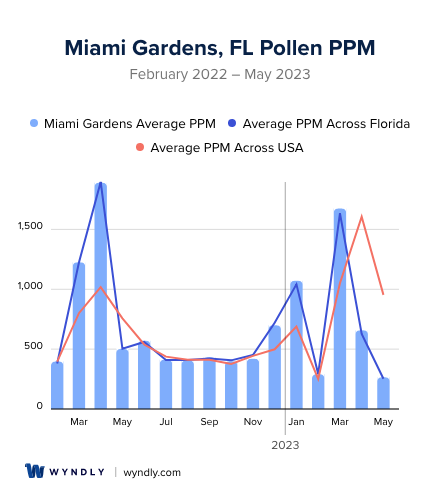
Miami Gardens, FL Pollen and Allergy Breakdown by Month
Grass
When is grass pollen highest in Miami Gardens, FL?
April has the highest grass pollen in Miami Gardens, FL with an average PPM of
When is grass pollen lowest in Miami Gardens, FL?
December has the lowest grass pollen in Miami Gardens, FL with an average PPM of
Tree
When is tree pollen highest in Miami Gardens, FL?
March has the highest tree pollen in Miami Gardens, FL with an average PPM of
When is tree pollen lowest in Miami Gardens, FL?
July has the lowest tree pollen in Miami Gardens, FL with an average PPM of
Weed
When is weed pollen highest in Miami Gardens, FL?
June has the highest weed pollen in Miami Gardens, FL with an average PPM of
When is weed pollen lowest in Miami Gardens, FL?
February has the lowest weed pollen in Miami Gardens, FL with an average PPM of
Miami Gardens, FL Pollen Monthly Breakdown by Pollen Type

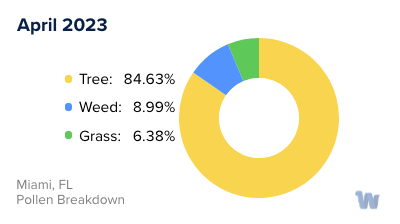

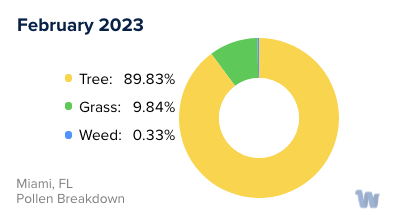

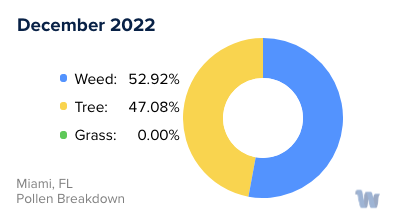
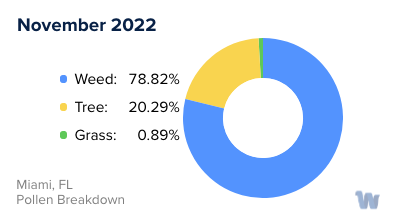
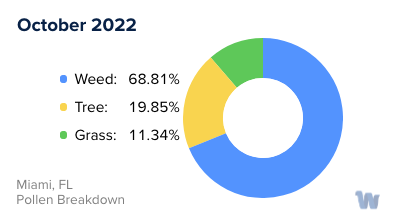
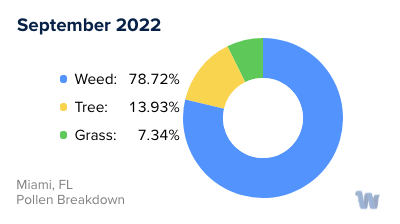
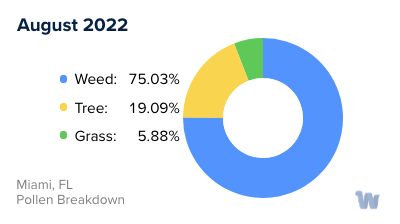
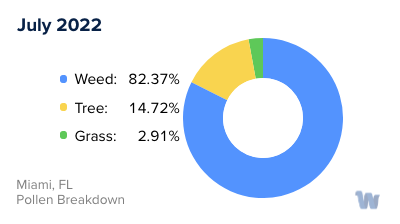
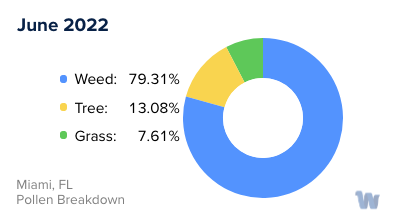


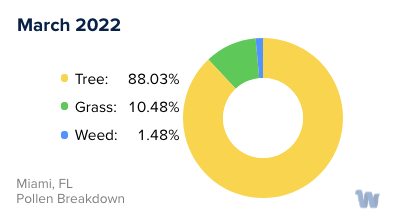
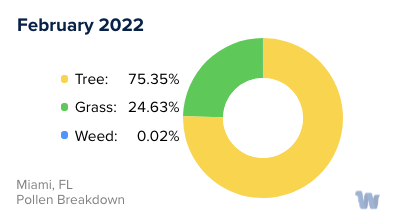
Pollen and Hay Fever in Miami Gardens, FL
In Miami Gardens, Florida, residents and visitors may find themselves navigating a landscape of constant pollen allergies, also known as hay fever, due to the region's warm and rainy climate that allows plants to thrive all year round. Unlike other locations that have a distinct allergy season, Florida's perennially mild climate means that the state sees a year-round allergy season, posing a continuous challenge for those susceptible to pollen allergies.
Pollen is released by plants during certain times of the year, leading to seasonal allergies. In Florida, the primary producers of pollen are grasses, trees, and weeds. Depending on the type of pollen one is allergic to, symptoms can flare up at any time of year. However, pollen allergies mainly become noticeable in the spring, summer, and fall.
One aspect that sets Florida's allergy season apart is the lack of a winter respite. With no true cold season to halt plant growth and pollination, there is no break from pollen allergies. Some plants continue to grow and pollinate even during the winter, extending the allergy season beyond that of most other states.
April, May, and September are critical months for those with pollen allergies in Florida. These are the months when seasonal allergies typically peak. During these times, pollen counts tend to be highest, making outdoor activities potentially more challenging for those with allergies. Interestingly, evenings in these months often see lower pollen counts.
In terms of specific allergens, Florida hosts a range of plants that can cause hay fever. Some of the most common allergens include ragweed, sorrel, oak, pine, river birch, bayberry, elm, and maple. Furthermore, the mild winters allow certain species of pine and oak to spread pollen even during the coldest months, reinforcing Florida's status as a year-round allergy hotspot.
In summary, Miami Gardens, Florida, offers a unique climate that supports a constant cycle of pollen production, leading to year-round seasonal allergies. The diverse array of pollinating plants, combined with the lack of a winter break from pollen, makes this region a noteworthy environment for those affected by pollen allergies.


